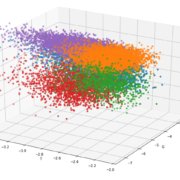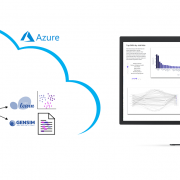4 Industries Likely to Be Further Impacted by Data and Analytics in 2020
Image by seeya.com
The possibilities for collecting and analyzing data have skyrocketed in recent years. Company leaders no longer must rely primarily on guesswork when making decisions. They can look at the hard statistics to get verification before making a choice.
Here are four industries likely to notice continuing positive benefits while using data and analytics in 2020.
- Transportation
If the transportation sector suffers from problems like late arrivals or buses and trains never showing up, people complain. Many use transportation options to reach work or school, and use long-term solutions like planes to visit relatives or enjoy vacations.
Data analysis helps transportation authorities learn about things such as ridership numbers, the most efficient routes and more. Digging into data can also help professionals in the sector verify when recent changes pay off.
For example, New York City recently enacted a plan called the 14th Street Busway. It stops cars from traveling on 14th Street for more than a couple of blocks from 6 a.m. to 10 p.m. every day. One of the reasons for making the change was to facilitate the buses that carry passengers along 14th Street. Data confirms the Busway did indeed encourage people to use the bus. Ridership jumped 24% overall, and by 20% during the morning rush hour.
Data analysis could also streamline air travel. A new solution built with artificial intelligence can reportedly make flights more on time and reduce fuel consumption by improving traffic flow in the terminals. The system also crunches numbers to warn people about long lines in an airport. Then, some passengers might make schedule adjustments to avoid those backups.
These examples prove why it’s smart for transportation professionals to continually see what the data shows. Becoming more aware of what’s happening, where problems exist and how people respond to different transit options could lead to better decision-making.
- Agriculture
People in the agriculture industry face numerous challenges, such as climate change and the need to produce food for a growing global population. There’s no single, magic fix for these challenges, but data analytics could help.
For example, MIT researchers are using data to track the effects of interventions on underperforming African farms. The outcome could make it easier for farmers to prove that new, high-tech equipment will help them succeed, which could be useful when applying for loans.
Elsewhere, scientists developed a robot called the TerraSentia that can collect information about a variety of crop traits, such as the height and biomass. The machine then transfers that data to a farmer’s laptop or computer. The robot’s developers say their creation could help farmers figure out which kinds of crops would give the best yields in specific locations, and that the TerraSentia will do it much faster than humans.
Applying data analysis to agriculture helps farmers remove much of the guesswork from what they do. Data can help them predict the outcome of a growing season, target a pest or crop disease problem and more. For these reasons and others, data analysis should remain prominent in agriculture for the foreseeable future.
- Energy
Statistics indicate global energy demand will increase by at least 30% over the next two decades. Many energy industry companies have turned to advanced data analysis technologies to prepare for that need. Some solutions examine rocks to improve the detection of oil wells, while others seek to maximize production over the lifetime of an oilfield.
Data collection in the energy sector is not new, but there’s been a long-established habit of only using a small amount of the overall data collected. That’s now changing as professionals are more frequently collecting new data, plus converting information from years ago into usable data.
Strategic data analysis could also be a good fit for renewable energy efforts. A better understanding of weather forecasts could help energy professionals pinpoint how much a solar panel or farm could contribute to the electrical grid on a given day.
Data analysis helps achieve that goal. For example, some solutions can predict the weather up to a month in advance. Then, it’s possible to increase renewable power generation by up to 10%.
- Construction
Construction projects can be costly and time-consuming, although the results are often impressive. Construction professionals must work with a vast amount of data as they meet customers’ needs. Site plans, scheduling specifics, weather information and regulatory documents all help define how the work progresses and whether everything stays under budget.
Construction firms increasingly use big data analysis software to pull all the information into one place and make it easier to use. That data often streamlines customer communications and helps with meeting expectations. In one instance, a construction company depended on a real-time predictive modeling solution and combined it with in-house estimation software.
The outcome enabled instantly showing a client how much a new addition would cost. Other companies that are starting to use big data in construction note that having the option substantially reduces their costs — especially during the planning phase before construction begins. Another company is working on a solution that can analyze job site photos and use them to spot injury risks.
Data Analysis Increases Success
The four industries mentioned here have already enjoyed success by investigating the potential data analysis offers. People should expect them to continue making gains through 2020.
Image by seeya.com










Leave a Reply
Want to join the discussion?Feel free to contribute!